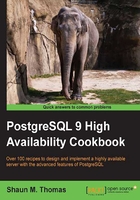
Introduction
Every piece of software has bugs. All hardware eventually fails or becomes obsolete. No environment is perfect. As a consequence, even a perfectly healthy database will require downtime periodically. How do we reconcile this need with client expectations, which imply that data is always available, no matter the circumstances?
As users ourselves, we know the frustration associated with attempting to use an application or website that isn't responding. Maybe the only impediment is a message indicating maintenance. No matter the cause, we have to remember to come back later and hope everything is working normally by then. Even with our knowledge about the complexity of software and databases, it is sometimes difficult to ignore an error message that prevents us from managing a bank account or making an online purchase.
Every day, users will be less understanding. Business owners and investors who may be losing millions in potential sales and liabilities while a system is unavailable are even less understanding. Yet, there are several tools available that decrease the likelihood of outages and others that help guarantee we're agile enough to handle them when outages—despite our best efforts—occur anyway.
As is often the case with high availability architecture, the trick is planning ahead.